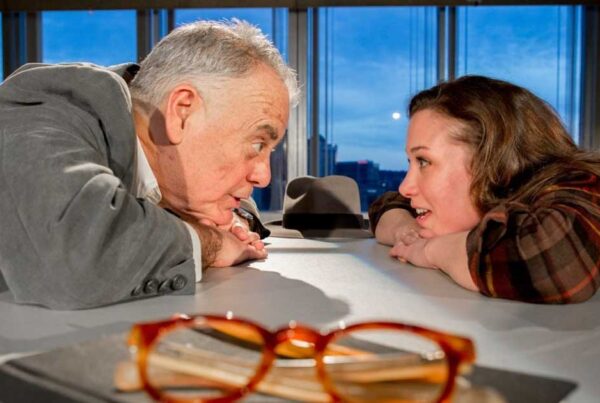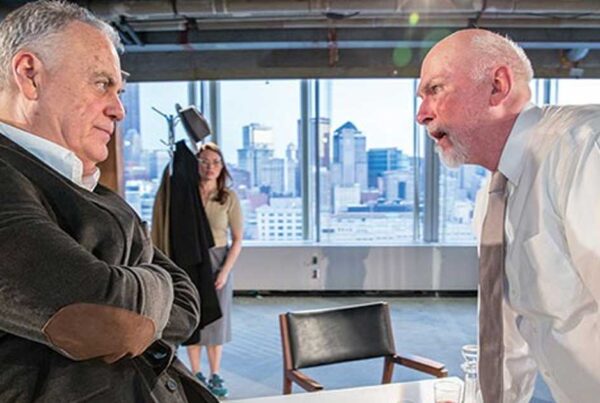
Tribune-Review – There are a number of labels you could use to describe Quantum Theatre’s production of “The Winter’s Tale” — an anniversary celebration, a collaboration of enormous complexity, an extraordinary leap of faith.
You also could distill it down to a single adjective: wondrous.
As you might expect from Quantum Theatre, the production that’s playing through Oct. 3 goes beyond a traditional staging of Shakespeare’s tragedy.
Quantum Artistic Director Karla Boos was inspired by her visit to the Metropolitan Opera’s 2011 premiere of “The Enchanted Island,” which converted Shakespeare’s “The Tempest” and “A Midsummer Night’s Dream” into a baroque opera. She resolved to bring a similar transformation to “The Winter’s Tale” for the start of the company’s 25th season.
One of Shakespeare’s later, darker plays, “The Winter’s Tale” follows a family’s downward spiral into death, loss and regret that begins with King Leontes’ single moment of jealous, unreasoning rage. He accuses his pregnant wife, Hermione, and his best friend, Polixines, of infidelity and goes on a rampage of banishments, imprisoning and estrangements.
Sixteen years pass before love, forgiveness and some comic shepherdesses and rogues bring about a magical, upbeat restoration.
As collaborators, Boos enlisted veteran members of Pittsburgh’s cultural scene: Chatham Baroque, which also is celebrating its 25th anniversary; Attack Theatre, which is about to begin its 21st season; and music director Andres Cladera, who had worked with Boos on three earlier Quantum productions.
The result is a testament to community collaboration: a completely new opera that combines Shakespeare’s plot and text with musical passages from baroque composers such as George Frederic Handel, Henry Purcell, Johann Sebastian Bach and ANtonio Vivaldi. Interludes of modern dance add support and a contemporary touch that’s completely at home within a largely 18th-century world.
Though completely grounded in the performance styles of the baroque period and 21st century, the performance neatly straddles the divide between theater and opera. Some may technically refer to it as a “pastiche opera.”
To my ears, the result was a seamless and artful blending of text and music that enhanced the story and supported the emotions of the characters while allowing some very fine singers to display their talents and training.
Boos aptly describes the undertaking as “enormous excess.” The company includes a cast of 11 actors, four dancers and an orchestra of 10 led by Cladera as conductor.
The entire cast, and most notably the leads — David Newman (Leontes), Robert Frankenberry (Polixines), Raquel Winnica Young (Hermione) and Gail Novak Mosites (Paulina) — are not only accomplished singers, but they also know how to inject character, intention and emotion into their roles and actions. So does Cosmo Clemens, who brought welcome comic relief as a scheming rogue.
Lithe and limber dancers Kaitlin Dann, Dane Toney, Anthony Williams and Ashley Williams create playful and supportive interludes.
Costume designer Susan Tsu, scenic designer Tony Ferrieri and lighting designer C. Todd Brown provide a lavish, gilt-edged environment.
Projection designer Joseph Seamans floods the backdrop and stage curtain with imagery that is clever — a downpour of flower petals, unfurling spring flowers — or adds insight.
On opening night, the show ran to just under three hours, partly due to an extended intermission. Program notes peg it at just under two-and-one-half hours with intermission. It feels much shorter.
Sung in English and supported by projected subtitles, it’s an opera that should entertain and satisfy opera lovers and those who think they don’t like opera…





A fabulous evening of art! Theater, Opera, baroque music, modern dance and a beautiful light show. Any one of the elements would have been a wonderful evening. We are fortunate that Pittsburgh has the artistic geniuses that allowed us to experience them all at once. Thanks to the Benter Foundation for sponsoring this incredible production.